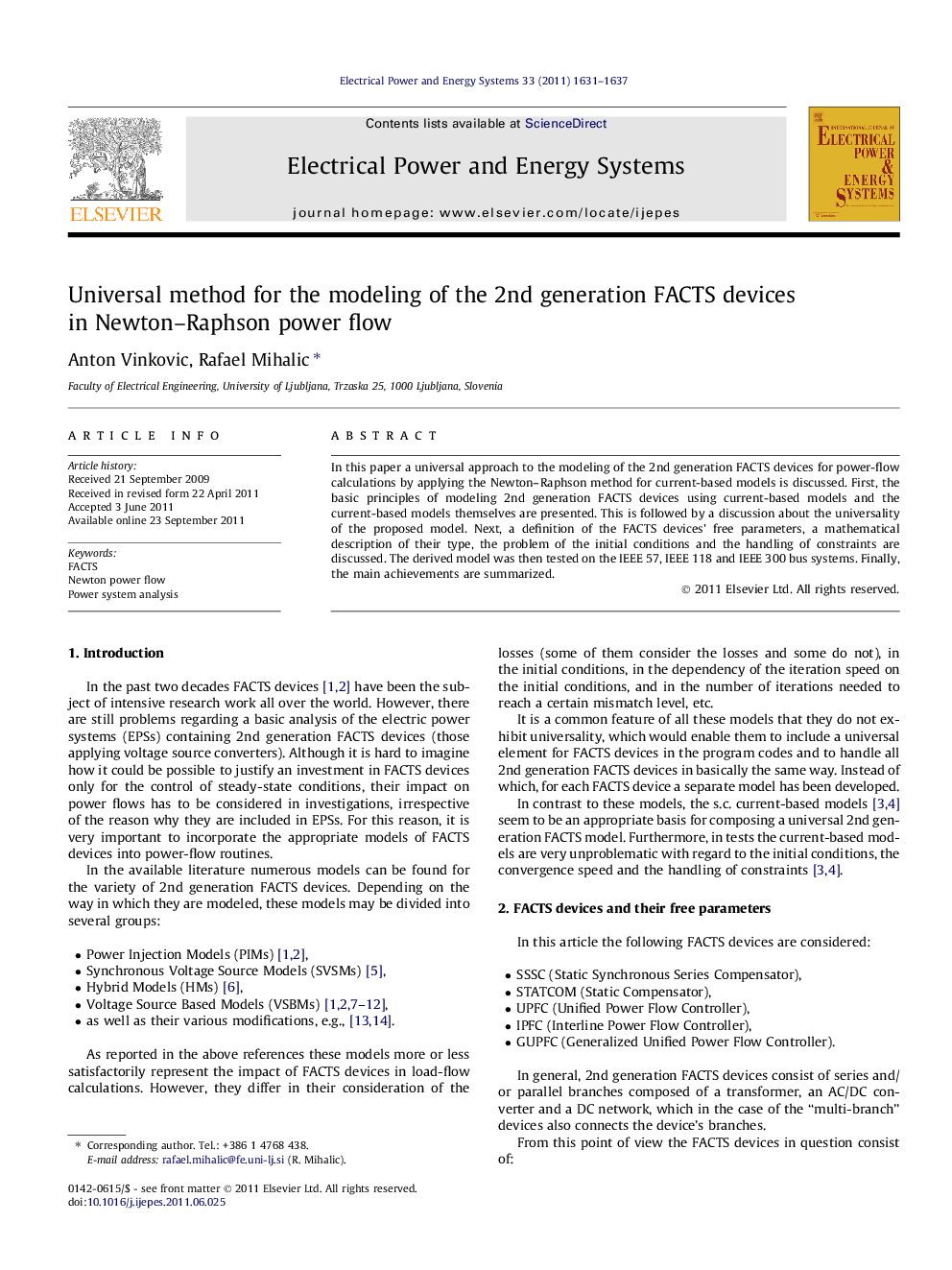| Article ID | Journal | Published Year | Pages | File Type |
|---|---|---|---|---|
| 399996 | International Journal of Electrical Power & Energy Systems | 2011 | 7 Pages |
In this paper a universal approach to the modeling of the 2nd generation FACTS devices for power-flow calculations by applying the Newton–Raphson method for current-based models is discussed. First, the basic principles of modeling 2nd generation FACTS devices using current-based models and the current-based models themselves are presented. This is followed by a discussion about the universality of the proposed model. Next, a definition of the FACTS devices’ free parameters, a mathematical description of their type, the problem of the initial conditions and the handling of constraints are discussed. The derived model was then tested on the IEEE 57, IEEE 118 and IEEE 300 bus systems. Finally, the main achievements are summarized.
► A universal way to the modeling of 2nd generation FACTS for Newton LF is discussed. ► The model is no “device oriented”, but “branch oriented”. ► The tests were carried out on the three benchmark systems for five different FACTS. ► Various initial conditions as well as constraints have been considered. ► The current-based models have proven to be extremely robust.
